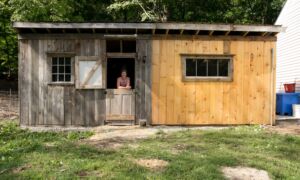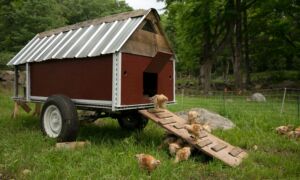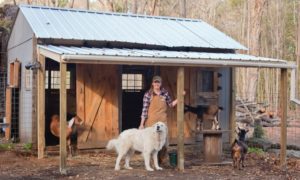It’s no secret that we put all of our animals to work clearing our land. The pigs turn over the soil in the woods as we clear trees to create pasture, the goats clear brush and maintain our stone walls, the sheep graze our pasture and the meat chickens follow them fertilizing and aerating the soil. Between the animals themselves, the electric netting, and the mobile livestock shelters, there are a lot of moving pieces…literally.
In the summer we are moving animals daily. Depending on where they are and what we are trying to accomplish we could be only moving the sheep, or maybe the sheep, goats, and chickens. Just like with anything else we do here, we have evolved our methods based on experience. All of our mobile livestock shelters used to be hoop houses made out of cattle panels and tarps. Not only were these eyesores, but they were hard to move and didn’t hold up well to the animals. We were repairing them a couple of times a season. When you’re doing something daily, you want it to be as efficient of a process as possible.
We have since evolved to making all of our mobile livestock shelters for pigs, sheep, and goats with metal roofing on a simple wooden frame. Because these are for warm weather use, they merely need to provide shade and protection from the rain. They do not need to be enclosed, or even three sided which allows them to be lighter and easier to move. We make the frame out of whatever scrap lumber we happen to have (ideally pressure treated for the boards that make contact with the ground) and size it according to the animal it’s intended for. Some are larger to accommodate more or bigger animals, while some also have a steeper or shallower pitched roof for more space. It all depends on the animal that it’s intended for. Metal galvanized roofing is secured down onto stringers and voila, we have a shelter.
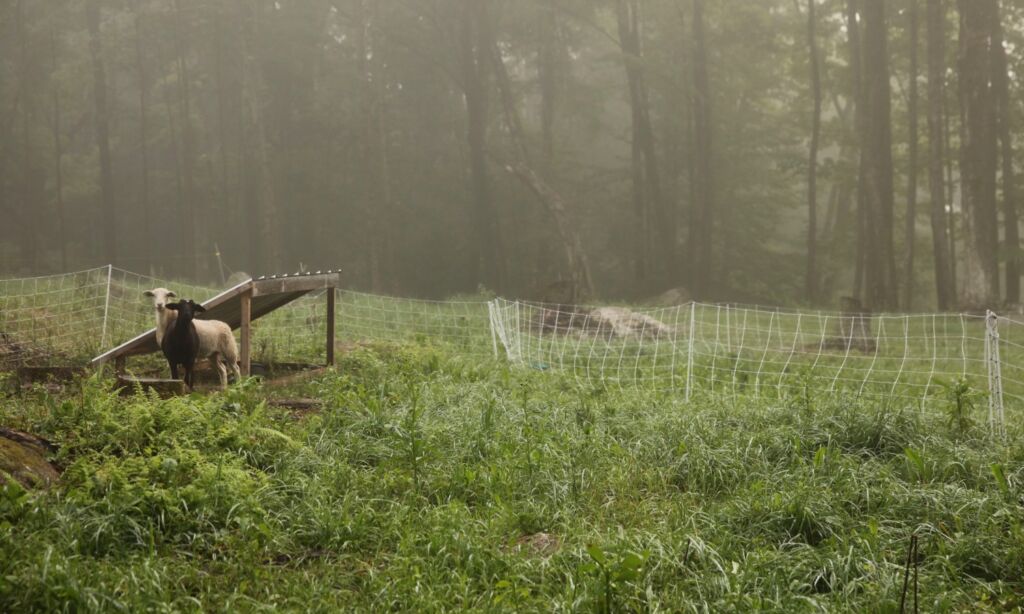
Our land is rocky, sloped, and a bit “cut up” in terms of where we graze/rotate our animals. The sheep will be rotated through our pasture where it’s simple enough to drag the shelter over when the fence is moved. Because it’s so light, we have never felt the need for tires. But, we will also move the sheep to say, the front yard, or up behind the house on the logging trail. This is a far distance to carry it, and the boulder blockades would make it impossible to drag even with tires.
This is where the tractor comes in handy and makes short work of it. We used to lift the shelters with the forks of the tractor and move them. This “worked” but required someone to be on the ground to help man handle and balance the shelter. It also inadvertently led to some accidents with the forks colliding with something it shouldn’t, resulting in some repairs. This year we decided there was a better way, so dusted off our geometry skills. With a little math, a rope, and some U bolts, the shelter (no matter how big or small) can be easily lifted and perfectly balance en route by only one person.
To find the “sweet spot” aka the spot to mount the u bolts where the angled shelter will self balance is simple. Looking at the shelter from the side, you go from the bottom front corner (bottom front left in photo below) and go up at a 45° angle to where it bisects the rafter. Where the angle meets the rafter is where you place your U-bolt, and repeat on the other side. We have used this same math for the smaller sheep shelter seen below, as well as the very large Big Marie sized shelter and it was spot on both times.
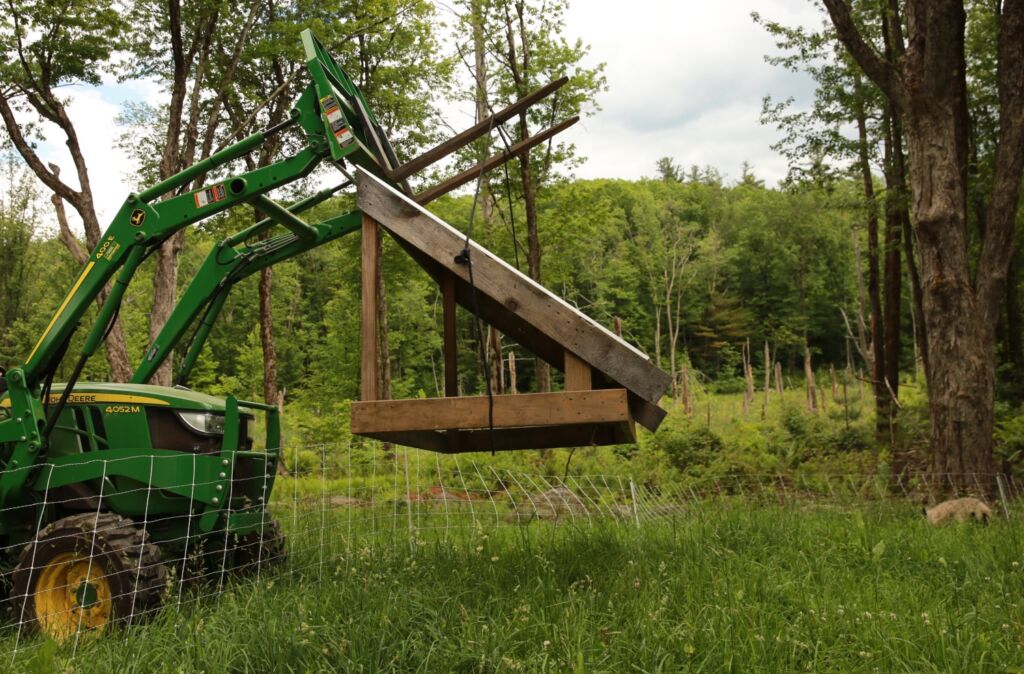
We have a strong length of nylon rope that already has a loop in one end. The free end of the rope goes through the loop and the u-bolt. It then goes up and over the roof, looping around both forks in opposite directions to prevent sliding, and then secured to the other U-bolt with a knot. Lift, and up and away she goes.
Super simple.
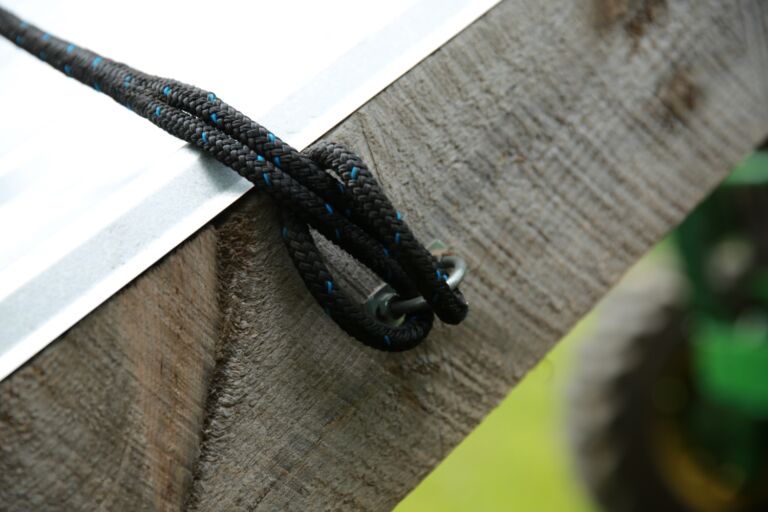
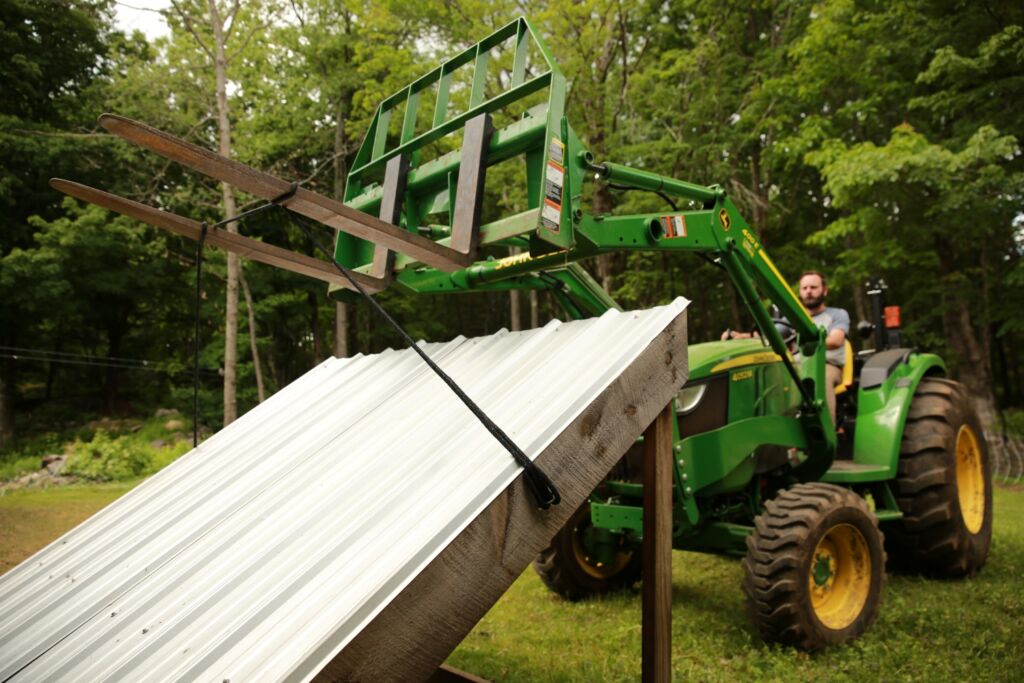
This mobile livestock shelter design have served us well for going on two years now. We love the style and simple design so much, that we have made two additional ones this year for our pigs. They serve their purpose: provide shade and protection from the elements. They’re light enough to drag from one rotation to the next, but strong enough to withstand the constant rubbing of the animals. When we do need to move them over long distances, some simple mathematics allows the shelter to be moved easily while maintaining perfect balance by one person.
If we wanted to adapt these for winter use, we could easily enclose the two sides or even half of the front. But, because we use more permanent infrastructure in the wintertime, at the end of the season we set these up on cinder blocks to get them off the ground until the next year. The beauty of these, is not only are they not eyesores sitting in the pasture, but they are quite inexpensive when you factor in the longevity you get out of them. Even better, they’re highly customizable and flexible depending on the animals you’re sheltering and your terrain.
Happy Building,

